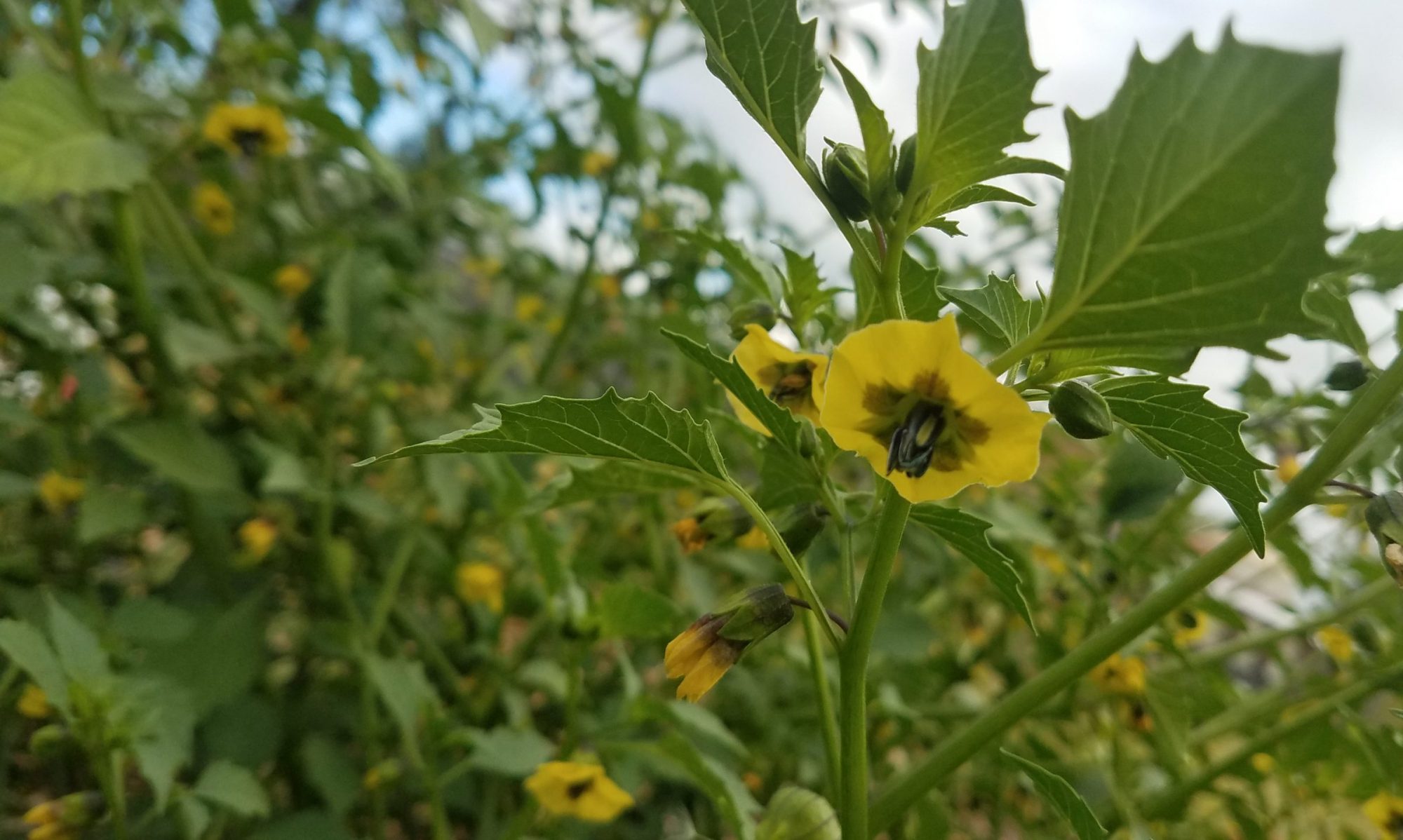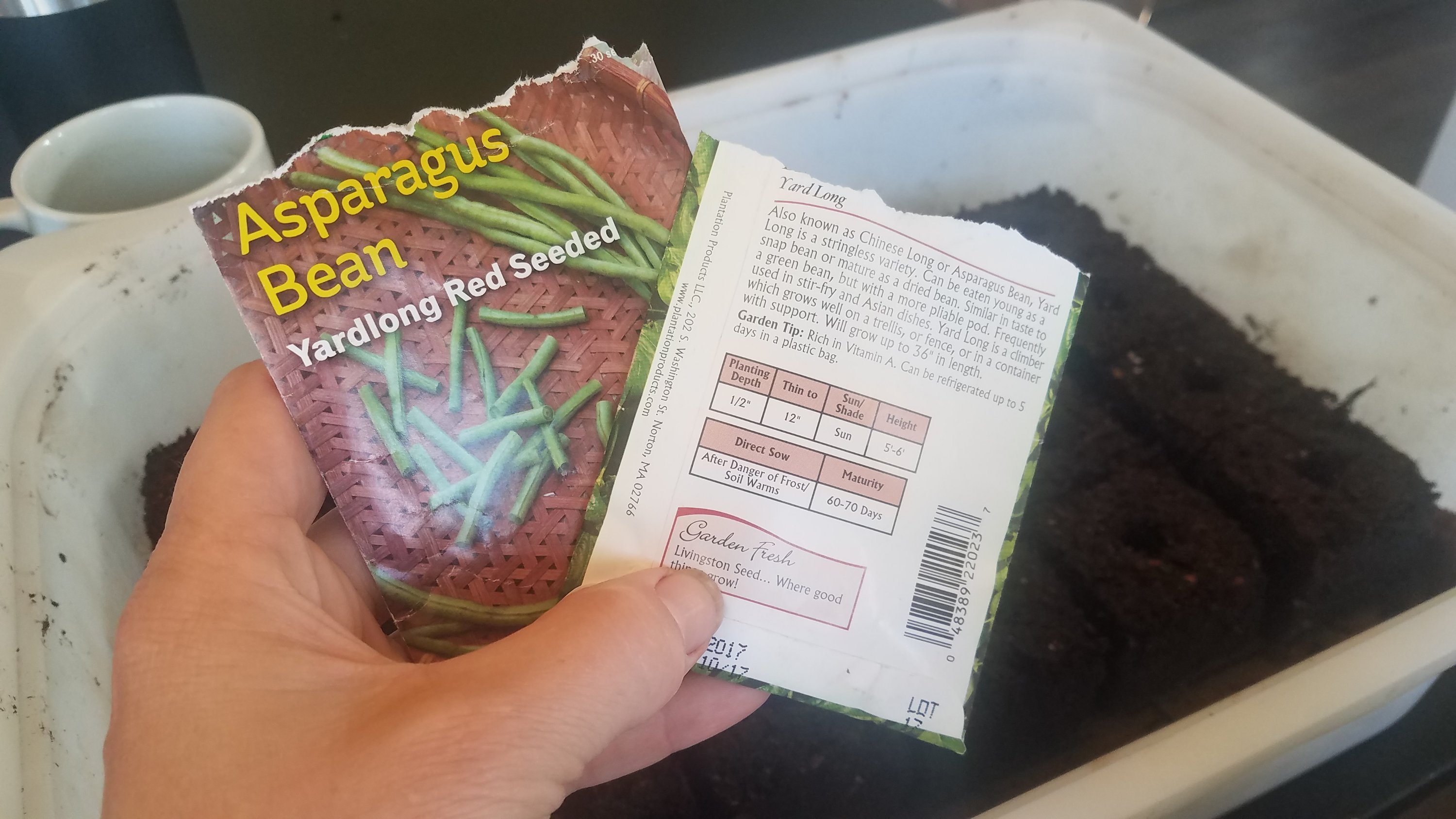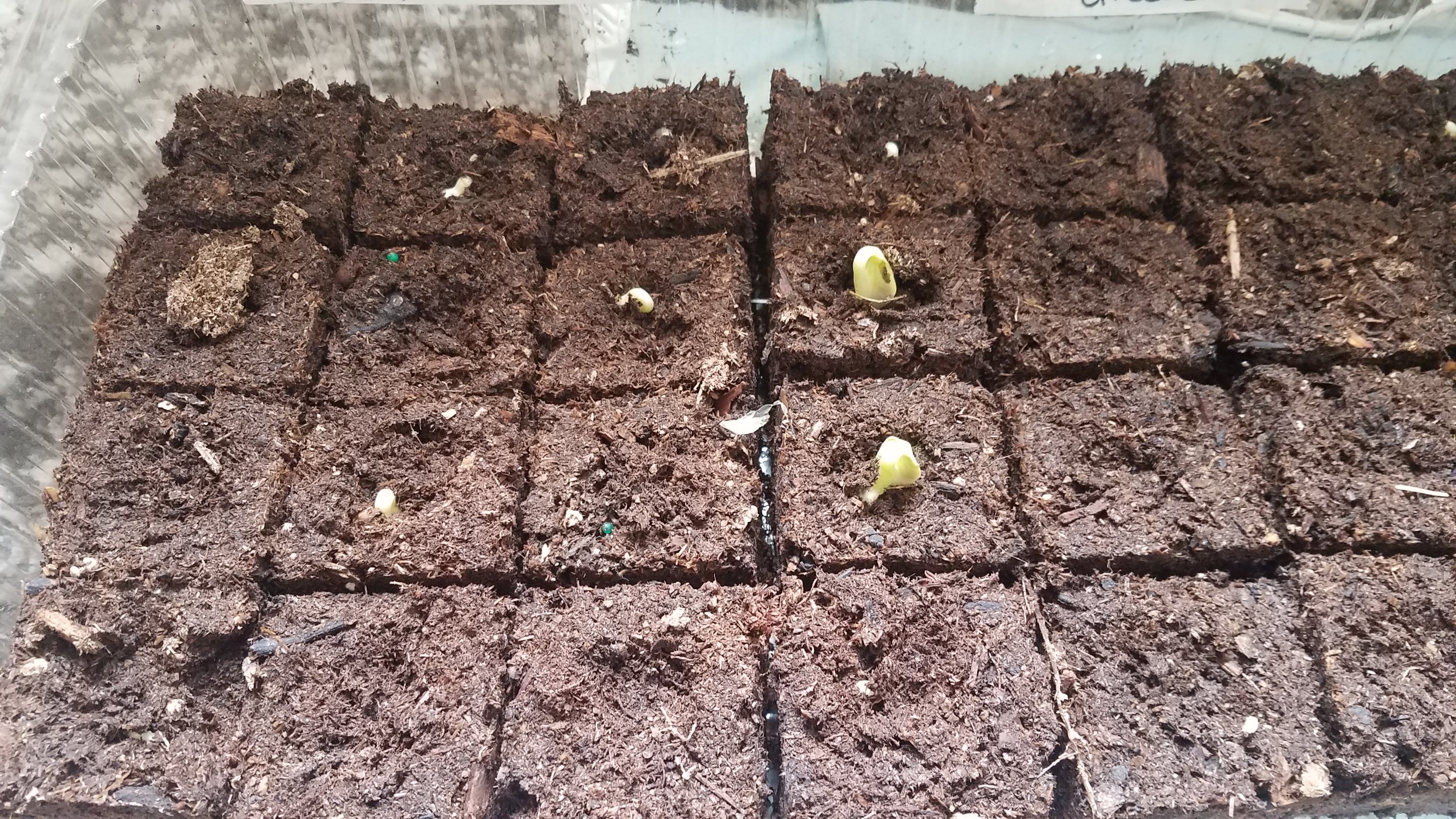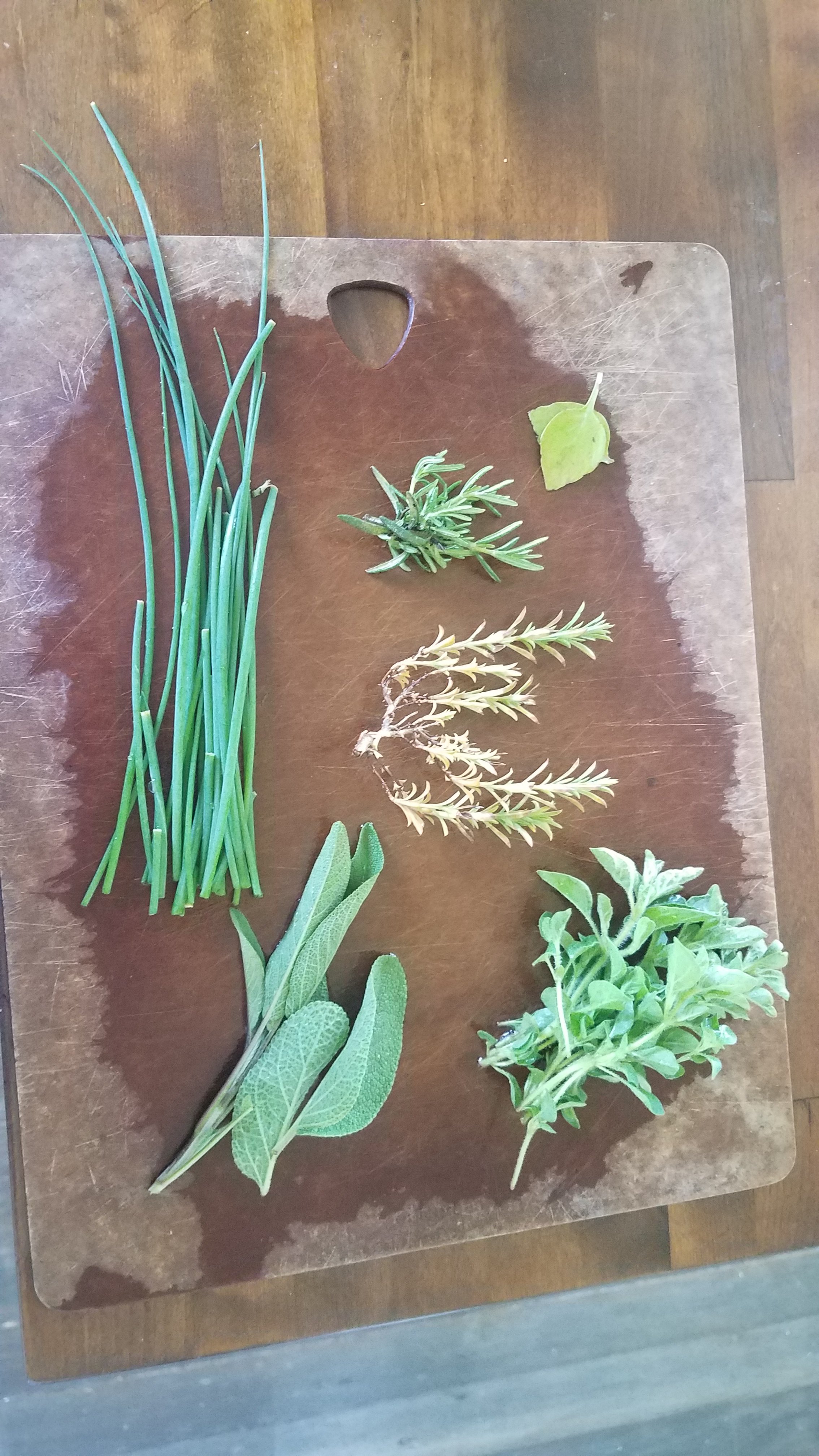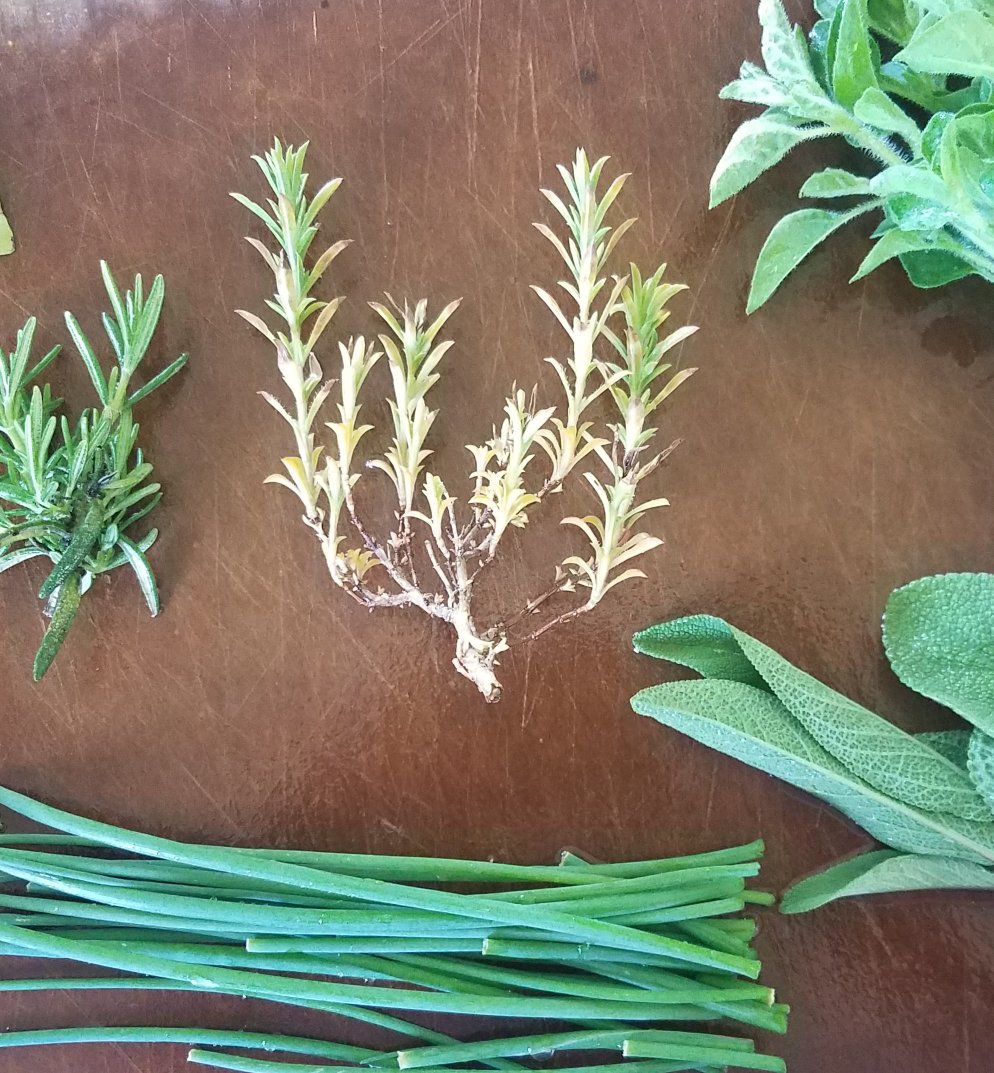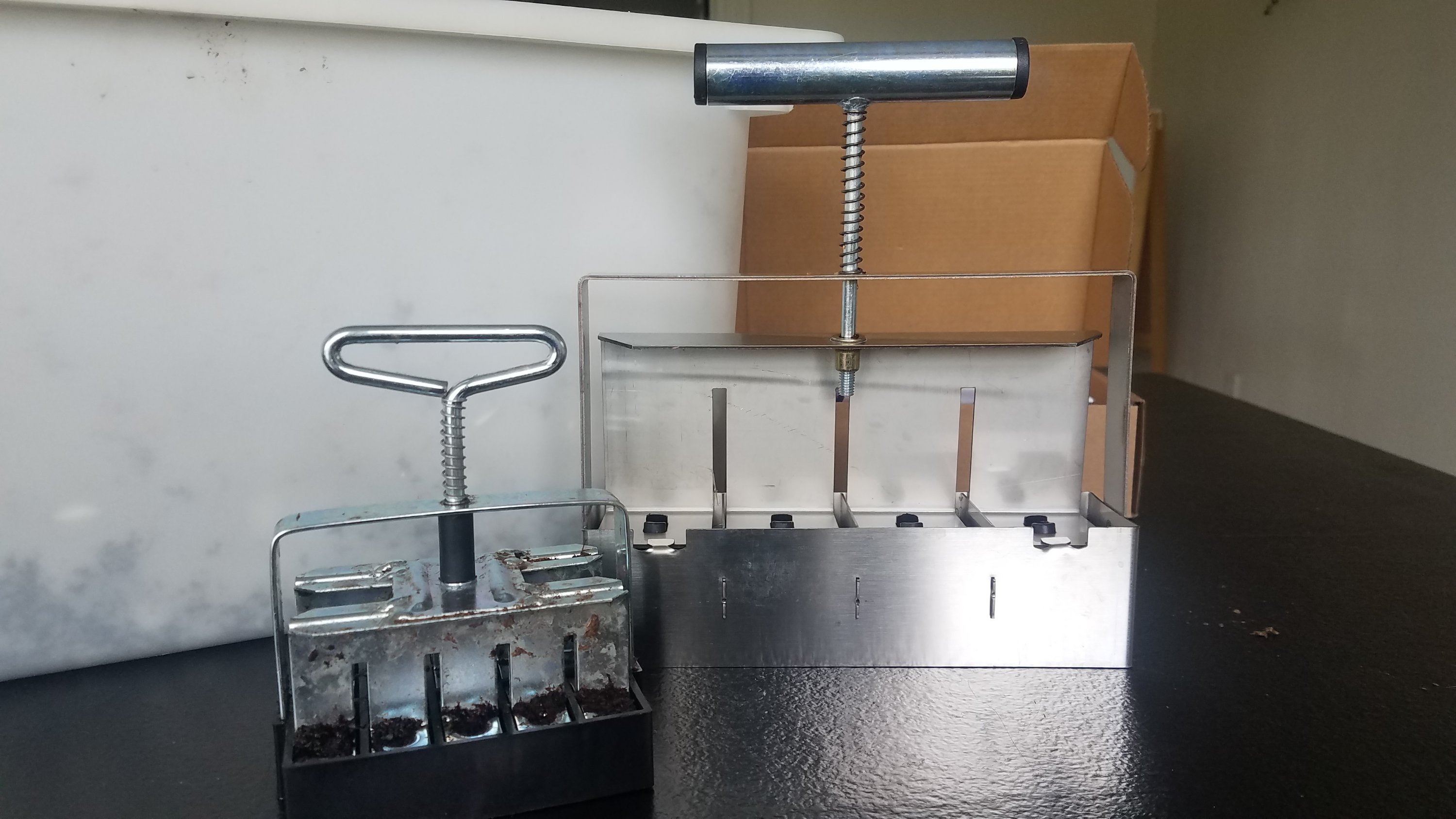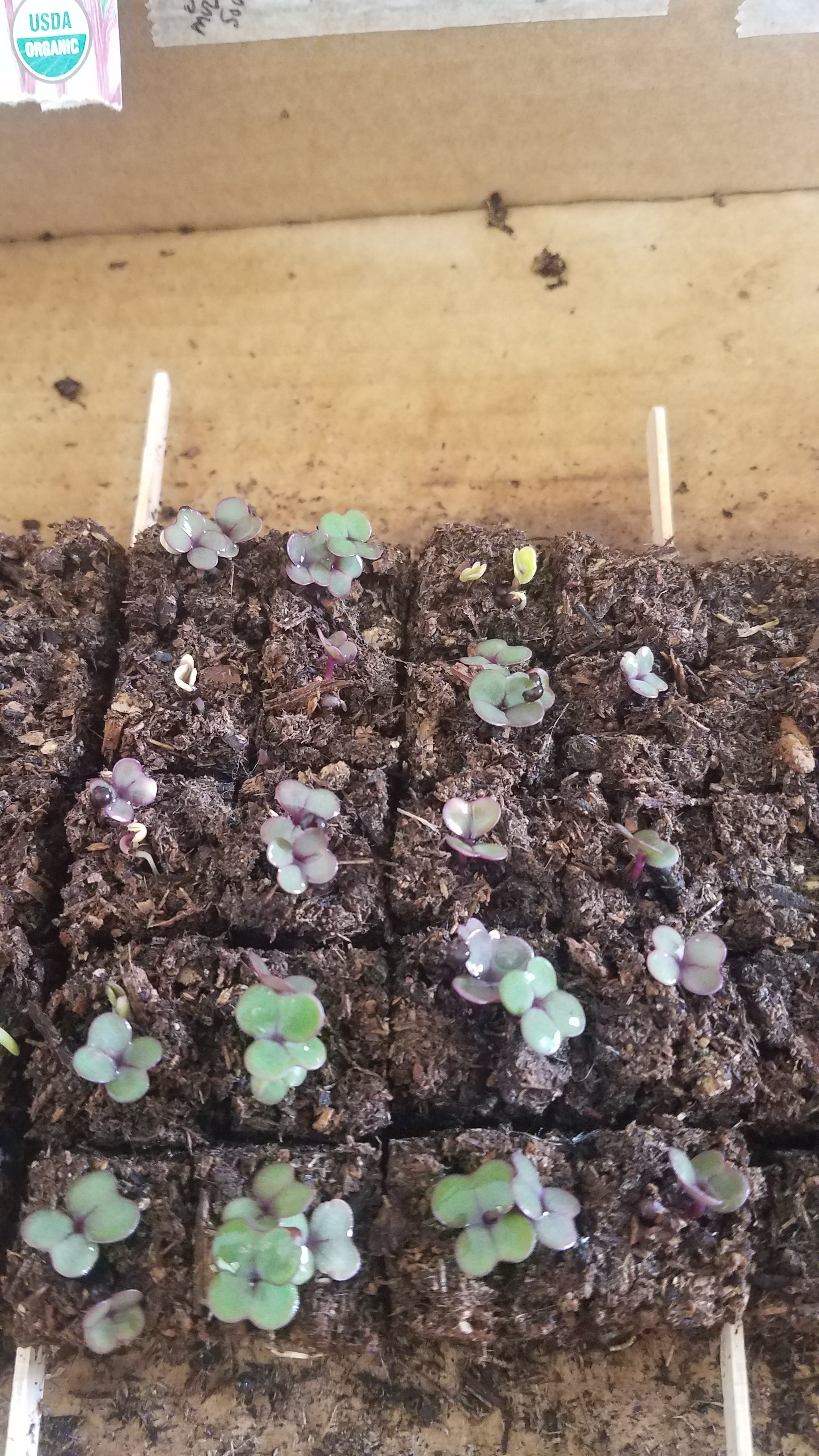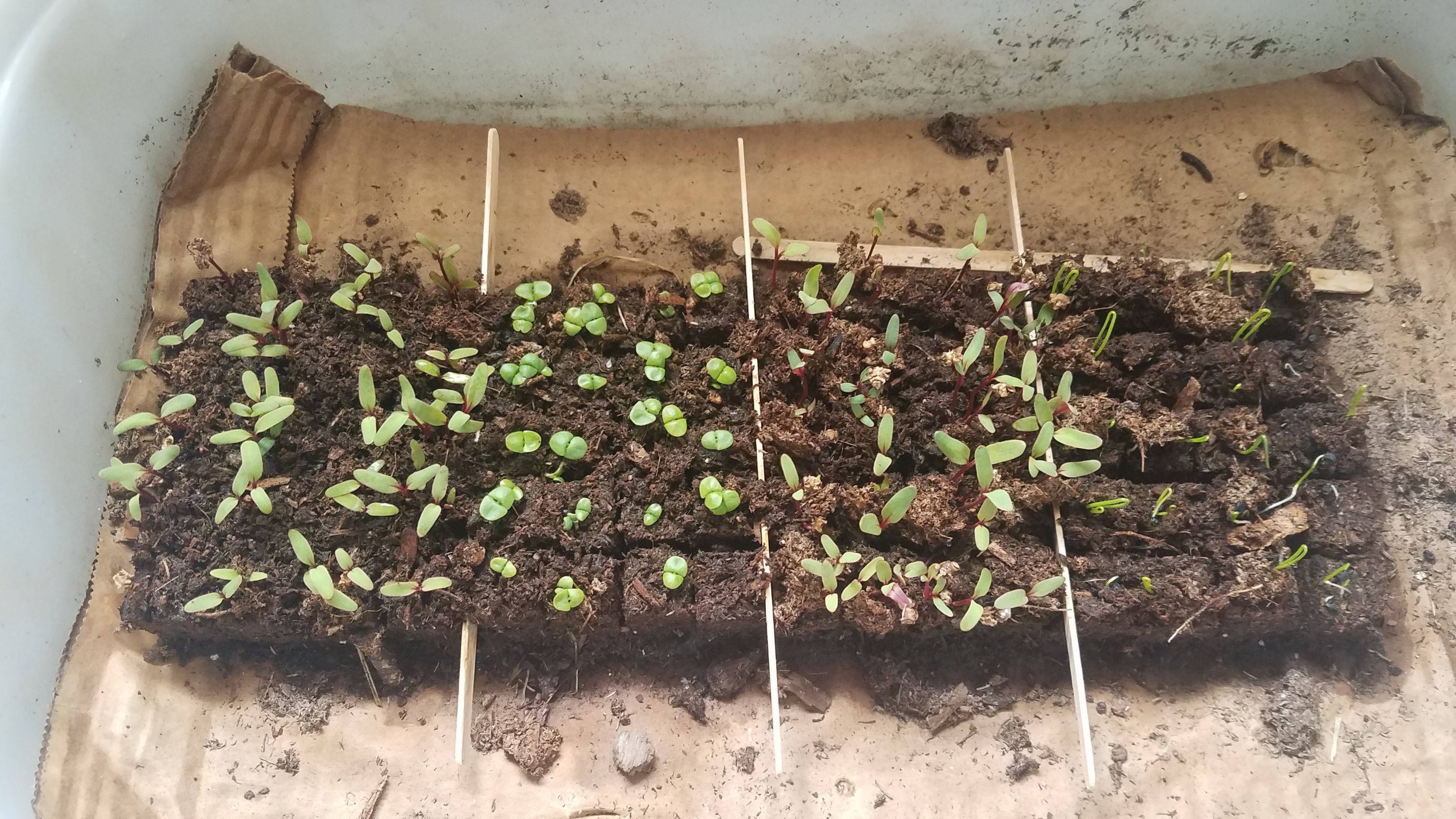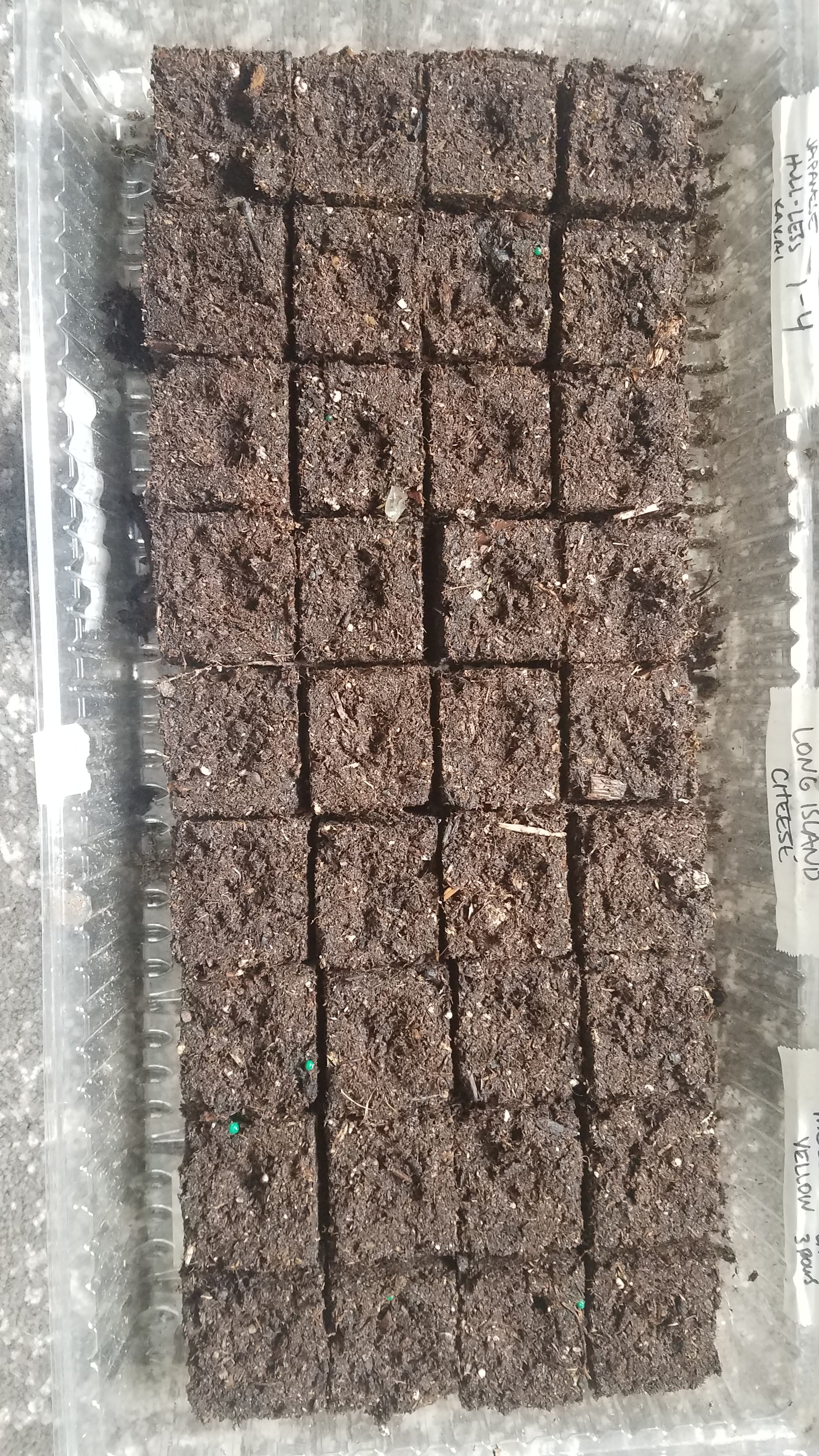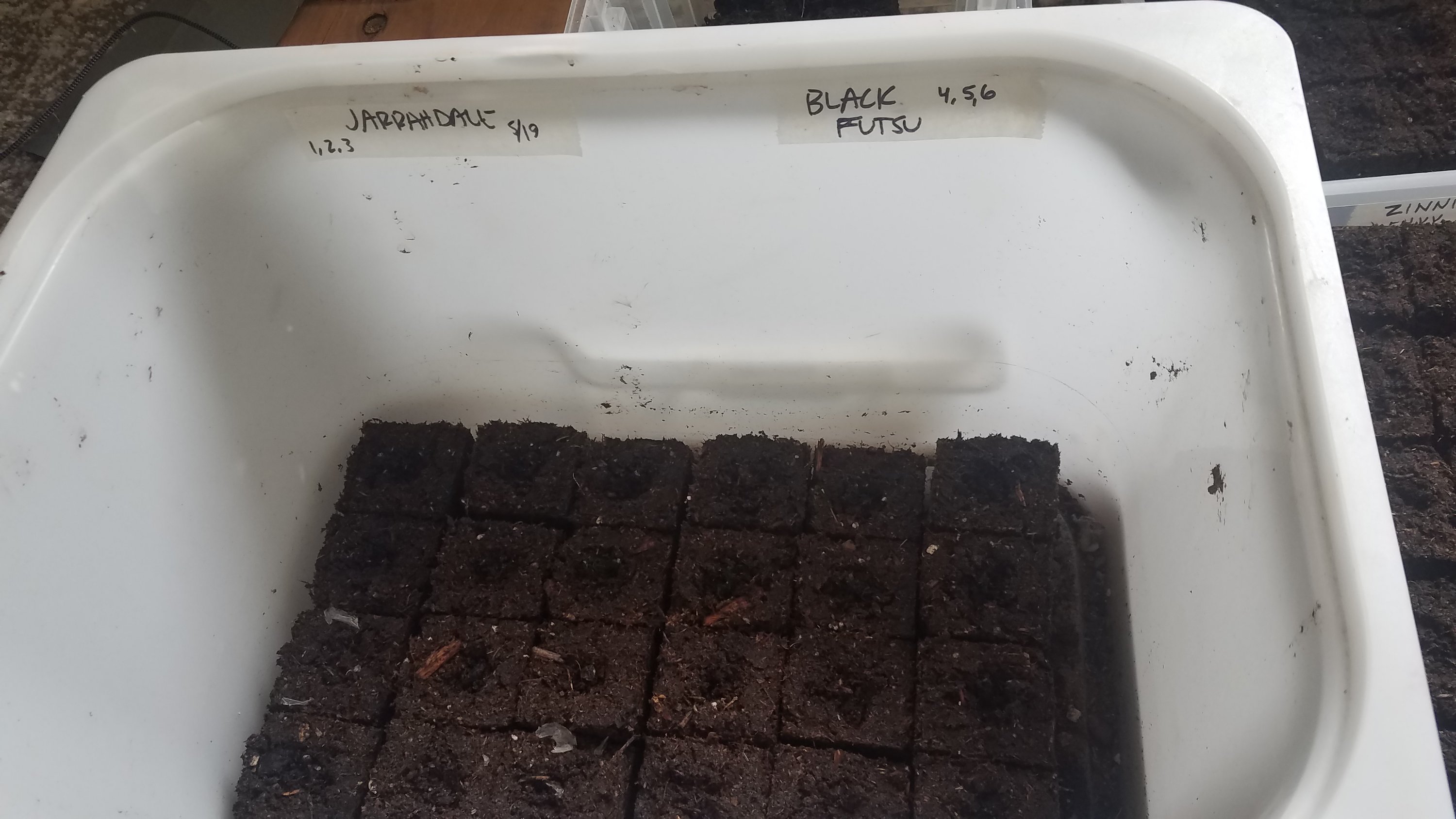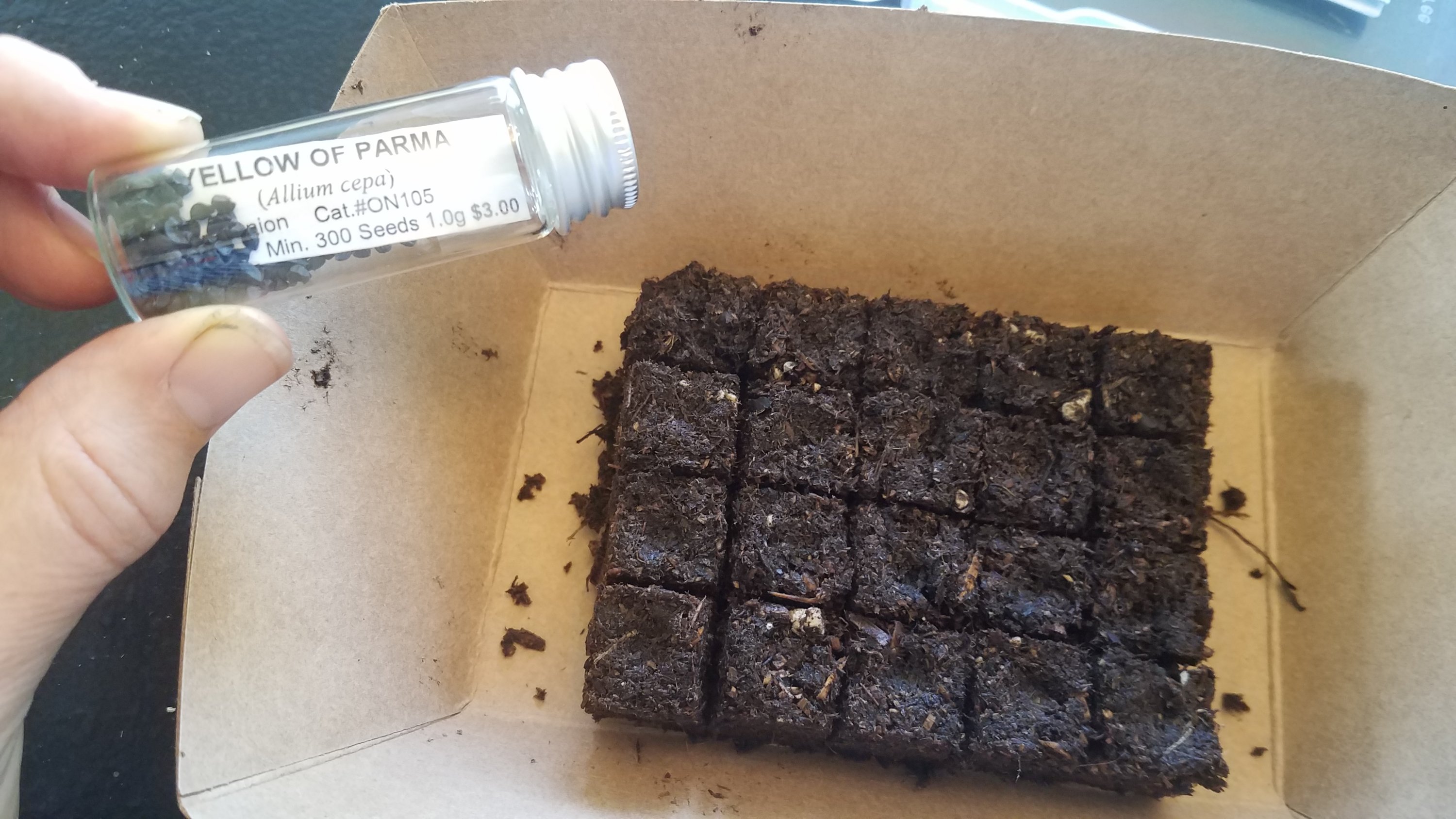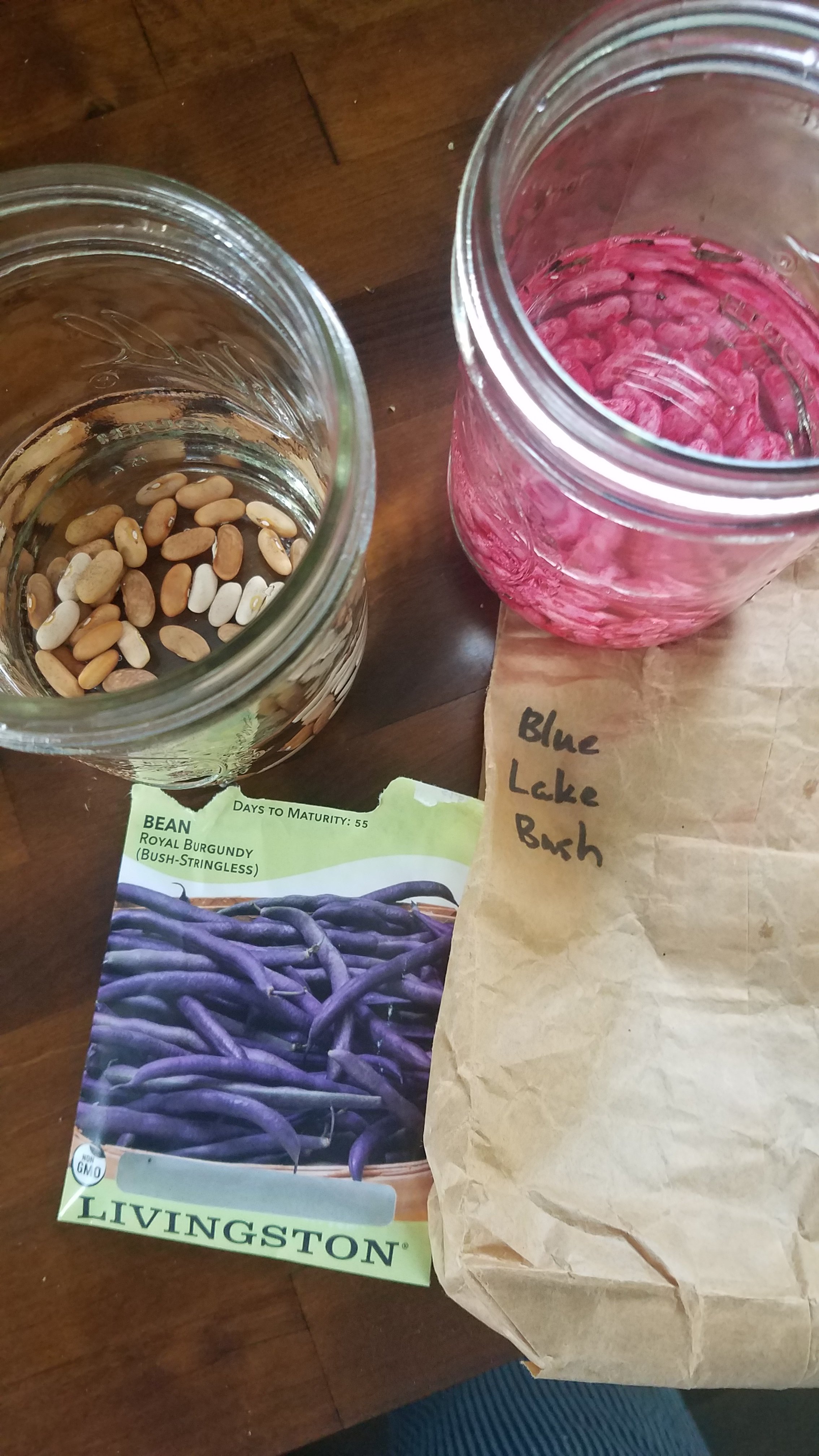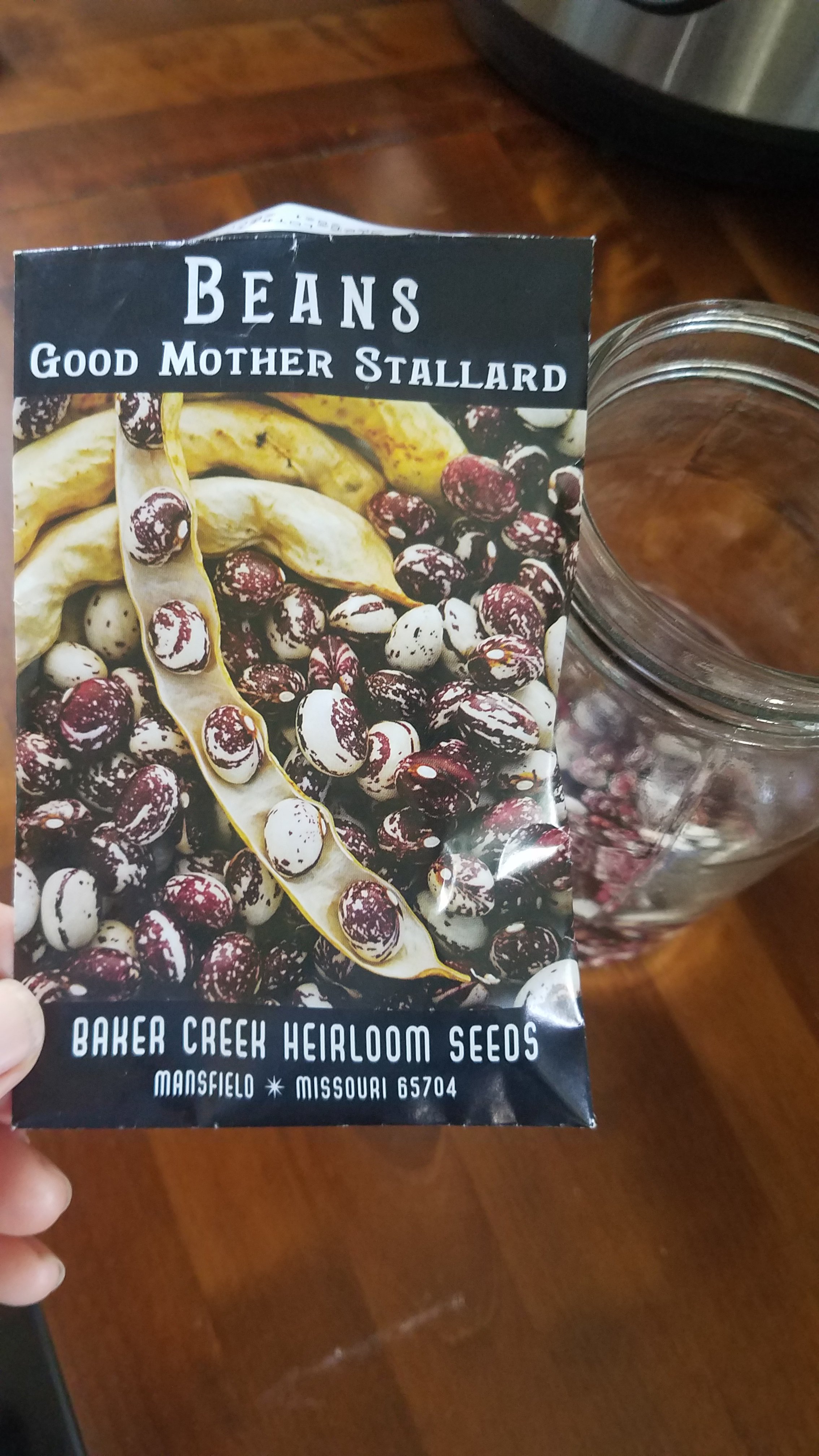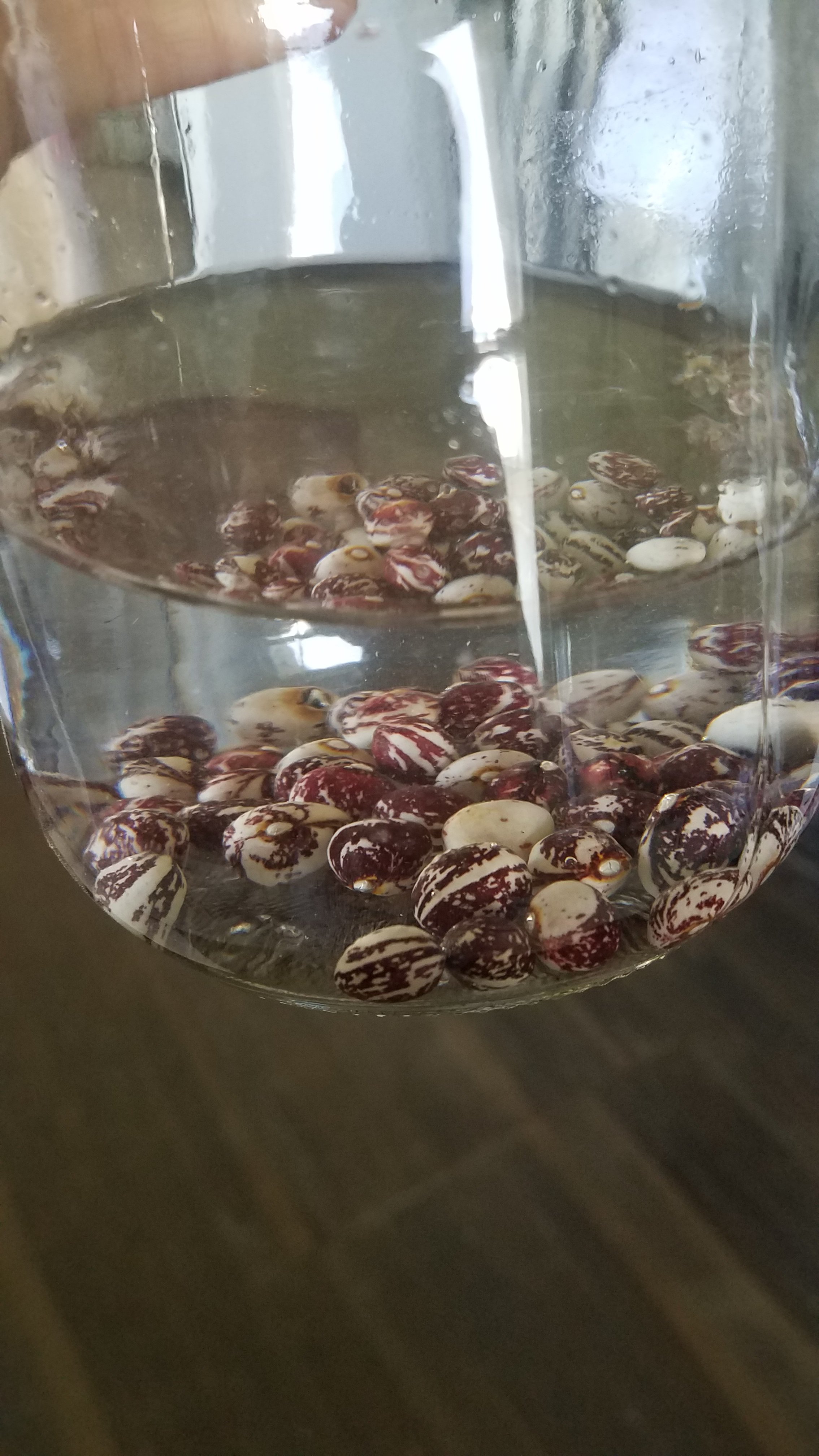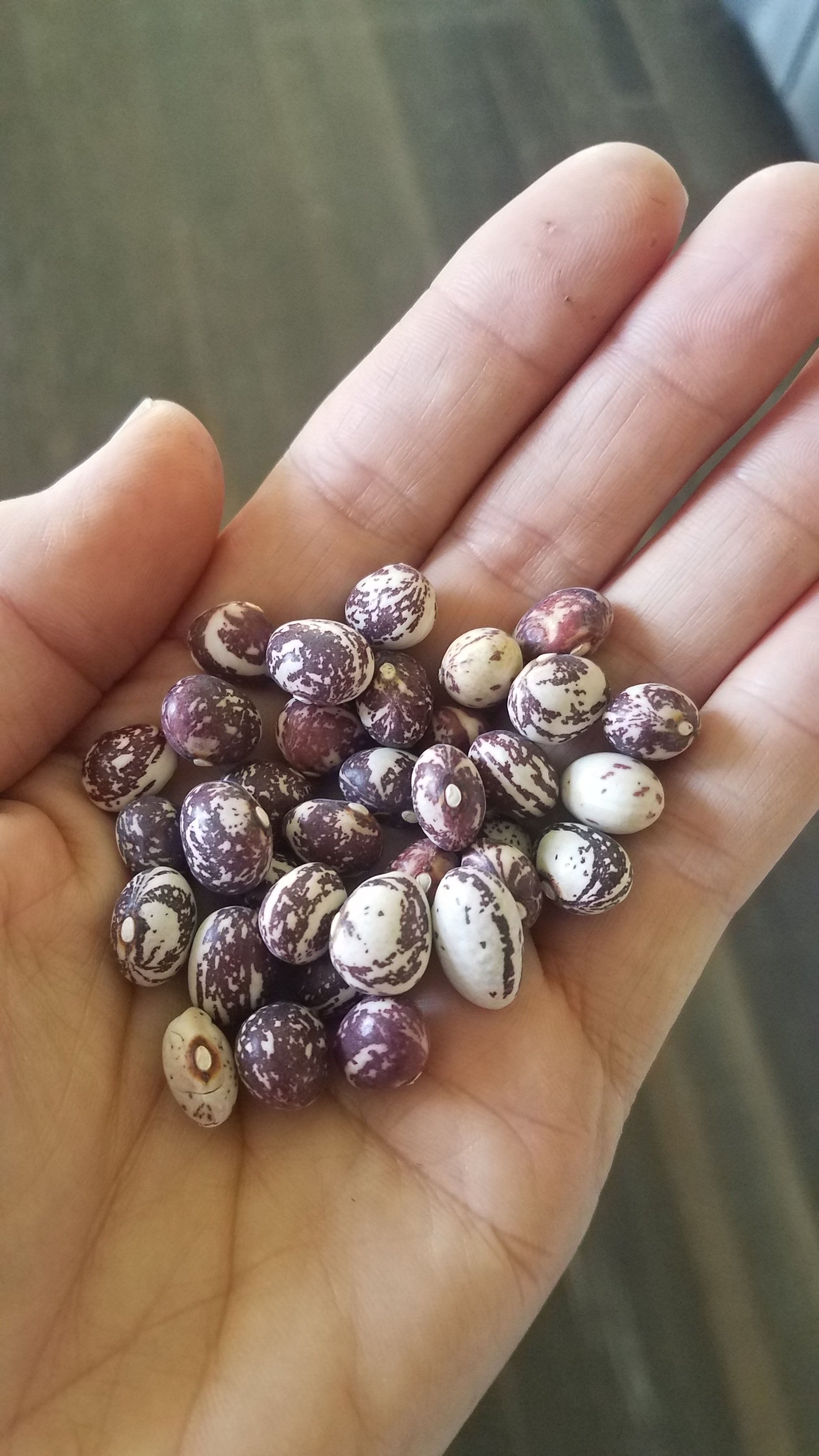Our Old Mother Stallard beans were lackluster sprouters. Maybe they’ll perform well and be abundant. I moved some Stallard seedlings on the end to be with their friends. To keep our garden full, Josh recommended that I fill the empty spots with asparagus beans. We’re sprouting them in soil blocks this week!
Yesterday Isaac and I spent a couple hours weeding the garden and digging a trench around it to prevent grass from creeping in. I know weeding isn’t a one-and-done thing, but for now the garden looks very tidy.
Most of the weeds were grasses, yarrow, plantain, clover, and volunteers from last year’s garden. We have used free arborist wood chips for the past couple years to reduce weeds–and it works! As long as we keep the woods chips on the surface, they don’t affect the nitrogen level in the soil.
We’re also experimenting this year with amending our soil with home grown rabbit manure. It isn’t a strong fertilizer, but it’s also safe to use without “aging” or composting.
In years past I (Heather) haven’t contributed much to maintaining the garden. But, as I’ve said before, the food shortages and disrupted supply chain of 2020 and 2021 have motivated me to be a more active participant in my literal survival. We’re slowly replacing things we used to buy at the store with home grown items.
Also, everything about growing your own food is good. It’s seasonal, organic, ultra-local, fresh, produced with natural fertilizers, and it just feels nice to watch something grow that started as a little seed.
Update: Apparently the dirt I dug from the trench landed on Josh’s freshly planted row of corn.
The first row of corn is up, and I planted the second row today. The potatoes are up, too. Instead of thinning the tatsoi, I tried transplanting every other plant to give them enough space. We’ll see how they handle it.
With the tractor running again, I was finally able to do some grooming on the driveway (I had to wait for rain, too, to loosen things up and keep the dust down). While I was using the tractor, it suddenly died. It turned out to be a buildup of deposit on the rotor in the distributor. A little sandpaper took care of it.
I forgot to mention, the bees died over the winter (probably from mites). Alden got a new nuc a couple weeks ago. Yesterday, he added a second brood box and two supers back onto the stack. We hope we can figure out how to help the bees survive the winter. We sprayed for mites last year, but apparently it wasn’t effective.
Seeds are miraculous. They lie dormant…then under the right conditions (playing “You’re the Inspiration” by Chicago helps) they emerge from their growing medium.
The above pic is one of my trays of soil-blocked pumpkin seeds. I also have trays outside that are filled with beets, zinnias, basil, and carrots.
I wish more people grew gardens, but I’ll save those musings for another post…
I grow herbs because they make me happy. They are typically robust, fragrant, beneficial and evergreen. Herbs are my spirit animal.
My favorite way to use herbs is to go into the garden, harvest the herbs that look healthy, place them in my herb basket, then think about how to use them as I clean and mince them.
“Hi, I’m Heather’s herb basket!” (Ignore the grumpy old rutabaga on the right.)
Y’all, it’s May 20th. We’re nearly a month past the “last frost date” but we got frost last night. That ain’t right! Thank goodness we were able to use the last of the evening light last night to quickly cover our tomatoes, basil and peppers with old frosting buckets and quart mason jars. We also brought in all of our tender seedlings.
This little cold snap is great for our peas, lettuce, mizuna (if it ever sprouts), orach, and cutting mix. We’ve had a month of no rain and lots of 80 degree days. That’s not the kind of weather that cold weather crops thrive in. However it is the kind of weather that makes you confident that the last frost is nearly a month in the rear view mirror.
Yesterday I was shopping for a thermometer/hygrometer for Isaac to take on his mission (it was on the packing list). Many of them had happy/sad face to indicate whether the humidity and temperature were in a comfort zone. I don’t like the idea of weather determining my mood. I’d like to think that I choose my mood regardless of the temperature or humidity.
However, if erratic weather starts messing with my plants, I think I’m allowed to get a little ruffled. How is it that we can have such a strong seasonal pattern of winter, spring, summer, fall, but the individual days can be so uncharacteristic of the season they are supposed to belong to?? (And don’t say “climate crisis.” It was a rhetorical question.)
I’ve made a lot of purchases over the years that I thought would improve my life, but they didn’t. Silly kitchen gadgets, ridiculous beauty products, and outdoor gear that is languishing in a dusty storage tote. It’s rare to find a product that promises AND delivers, then becomes an heirloom worth passing down to the next gen.
I bought two soil blockers this month, and already they have earned a top ten spot in my life (and in my heart–not even kidding). Anything that makes gardening easier, more productive, more economical and more effective is the kind of thing gardeners dream of.
A soil blocker is a little hand tool that you pack a soil blend into, then pop it out into perfect little squares–kind of like an ice cube tray, but the soil blocker has an ejector. Then you take the block of soil and plant your individual seeds (or multisow modules, thank you Charles Dowding) into the little squares of densely packed soil.
The soil blocker has dimples in each block which indent the top of the soil block, to make for easier planting. Por ejemplo, my 2×2 inch soil blocker has interchangeable dimples to accomodate large seeds, small seeds and a 3/4″ square so I can transplant my little soil blocks into bigger soil blocks.
You can’t just use garden dirt to make soil blocks–you have to use something that will hold more water and not get too hard. You have to make a special blend for your soil blocker. There are lots of soil blocker soil recipes, but I like to keep it simple: scoop of peat moss + a scoop of potting soil. Add enough water so that when you squeeze it into a lump in your fist, it sticks together. Oh, and as you’re mixing, pull out any big chunks of sticks or bark. (At the time of writing, peat moss is $11 for a bag so big that I can barely carry it).
I hand pack my soil blocker cells. I push the soil mix in pretty tight so that the soil block sticks together as the seedling grows. Then I squeeze the handle and out pop perfect squares of soil, ready to be seeded.
There are so many benefits to creating your own soil blocks. No plastic containers (yay!), no transplant shock when planting your seedlings in the garden, better use of space, easy, relaxing to create soil blocks, and it’s very beautiful. Leave room in the tray where you put the soil blocks so that you can water from the bottom. (They’ll disintegrate if you water from the top.)
In conclusion, a soil blocker is a really nice garden tool and I think evvvvveryone should have one. The End.
Heather planted red Pontiac potatoes in the east end of row #2 a few days ago.
I planted the first of four rows of corn today. The seeds soaked for almost a week before I got a chance to plant them.
Heather planted Jerusalem artichokes along the southeast fence line of the pasture in March. They’re about a foot tall now.
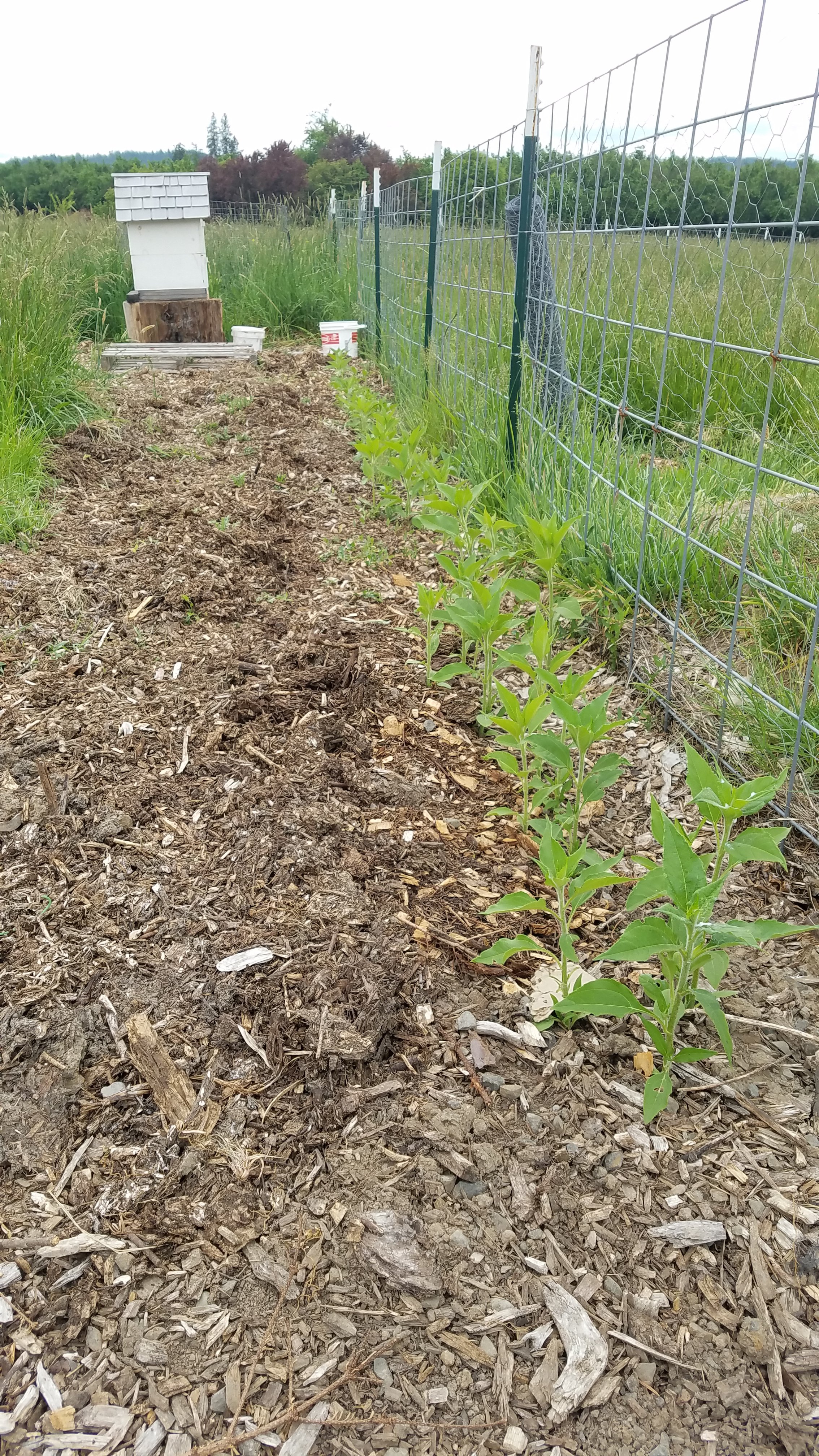
Last week I ordered a soil blocker that makes 20 little blocks of soil that measure 3/4″ x 3/4″.
Soil blocks are compacted squares of a special soil blend. They allow you to plant seedlings without using a plastic container. Pretty amazing!
Once the seeds sprout they “air prune” and are much easier to transplant since they aren’t root bound.
This is a great way to start your seedlings.
Ten out of our eleven pastured bunnies escaped and ate all the plants Josh bought for me for Mother’s Day. So yesterday I repurchased all my Mother’s Day gifts and replanted them. Two Juliet tomatoes, habanero, and thai chili–but I didn’t replace the snapdragons because I don’t want snapdragons in my garden. I also didn’t replace the leeks because they will grow back. The peppers might grow back too. I also need to replant some greens that the bunnies ate.
Grant, Isaac and I put 2 inch poultry netting on the bottom of the rabbit tractor so they won’t escape, but they’ll still have access to fresh grass.
I also planted 8 Italian Paste tomato plants, another habanero + thai chili for Josh, along with a spicy basil and 6 nasturtiums.
Today I am soaking beans for 12-24 hours before I plant them. I also dug up the horseradish and comfrey and moved them out to the exterior of the pasture.
Today I’ll dig up the ditch in front of our house and plant some wildflower seeds. Mostly sunflowers and millet. Maybe a few other seeds, too.
In the stories of Peter Rabbit, as of today I ally myself with Mr. McGregor.
The bunnies are escaping on a daily basis. They mowed down all of the leeks, tatsoi, peppers, tomatoes, snapdragons, a few garlics, and all of my lettuce. I’m not a happy gardener.
Lots of work in the garden today. We seeded peas and carrots. We transplanted six plugs of leeks, two Juliette tomatoes, a habanero pepper, and a Thai pepper plant, as well as six snapdragon plants. Heather transplanted a anise hyssop plant in the herb row. We laid down two more soaker hoses and watered. Things have been really dry lately for springtime. Today involved lots of weeding, cultivating soil, and raking.
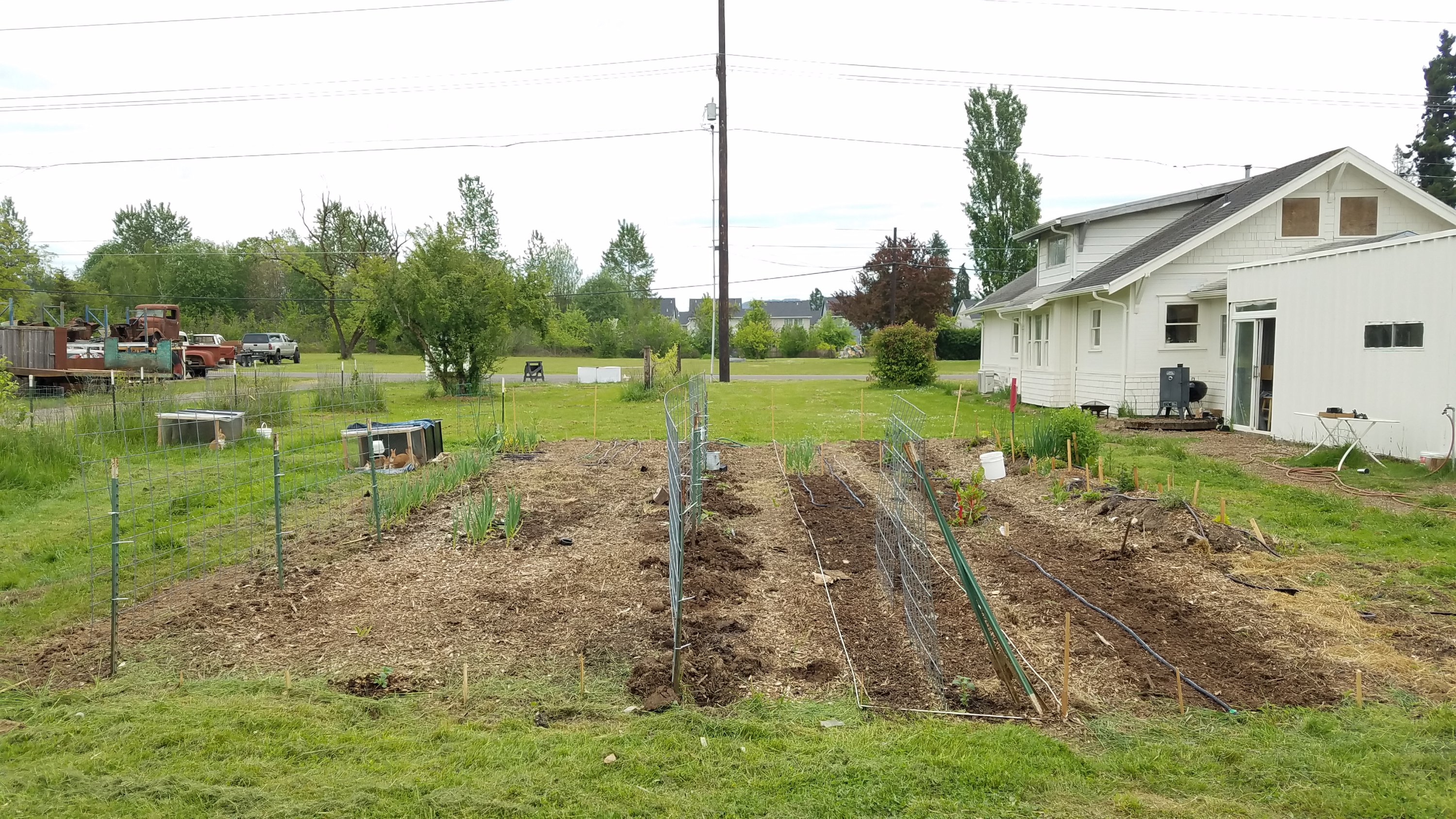
I love getting early spring harvests! The overwintered kale is about done– and getting aphids, so it’s time to pull it out–but the chard is super sweet and should keep going a bit longer… hopefully long enough to tide us over until this year’s planting starts to produce. I’m optimistic about the tatsoi.
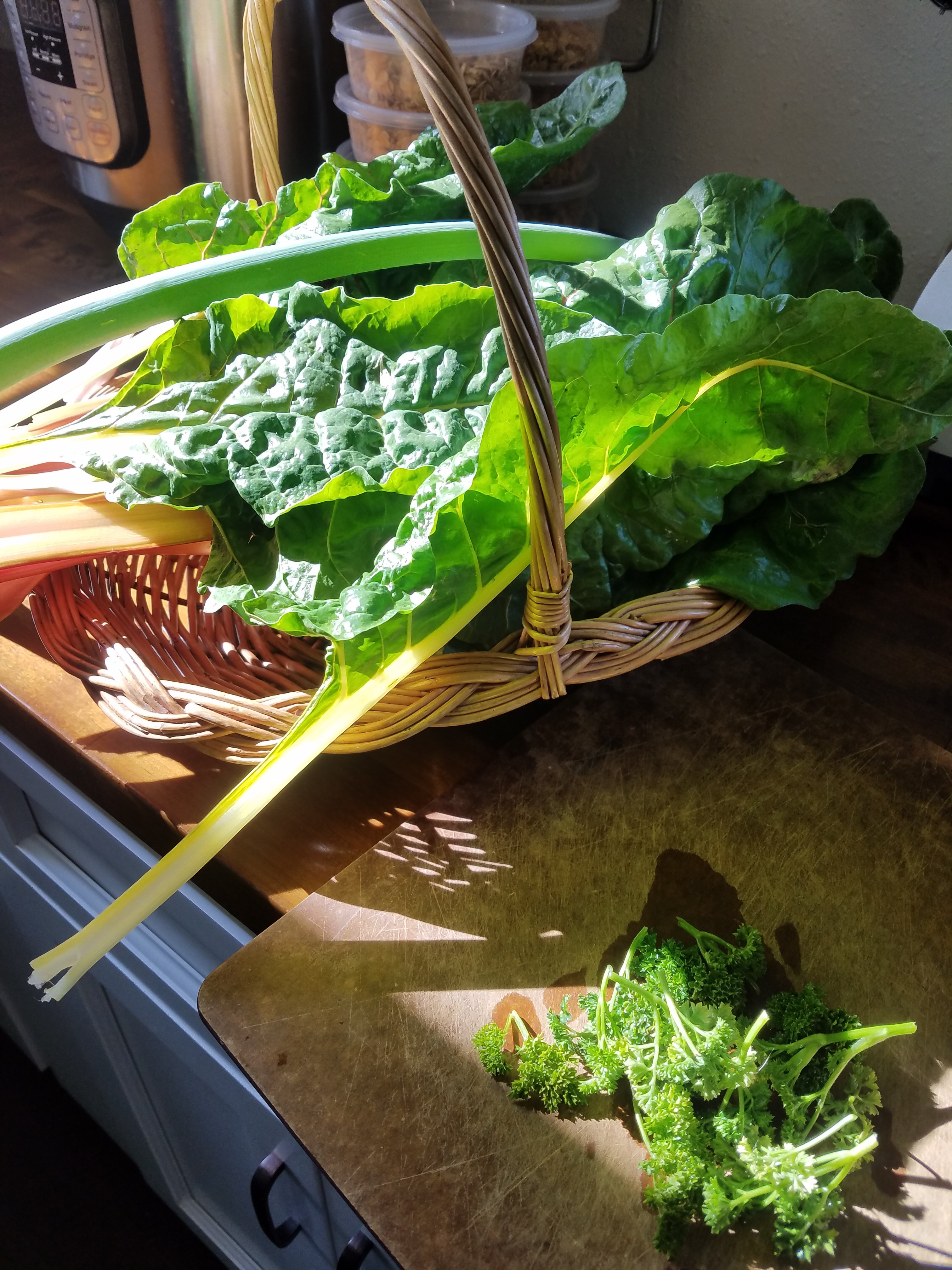
Front the incubator, we ended up getting six ducklings. Turkeys are more fragile: some never made it out of their egg, and a couple died after hatching, but two have survived.
We’re finally getting a little rain today after two very dry weeks.
Some of the duck eggs are starting to crack, and we are hearing peeping sounds. Any day now…
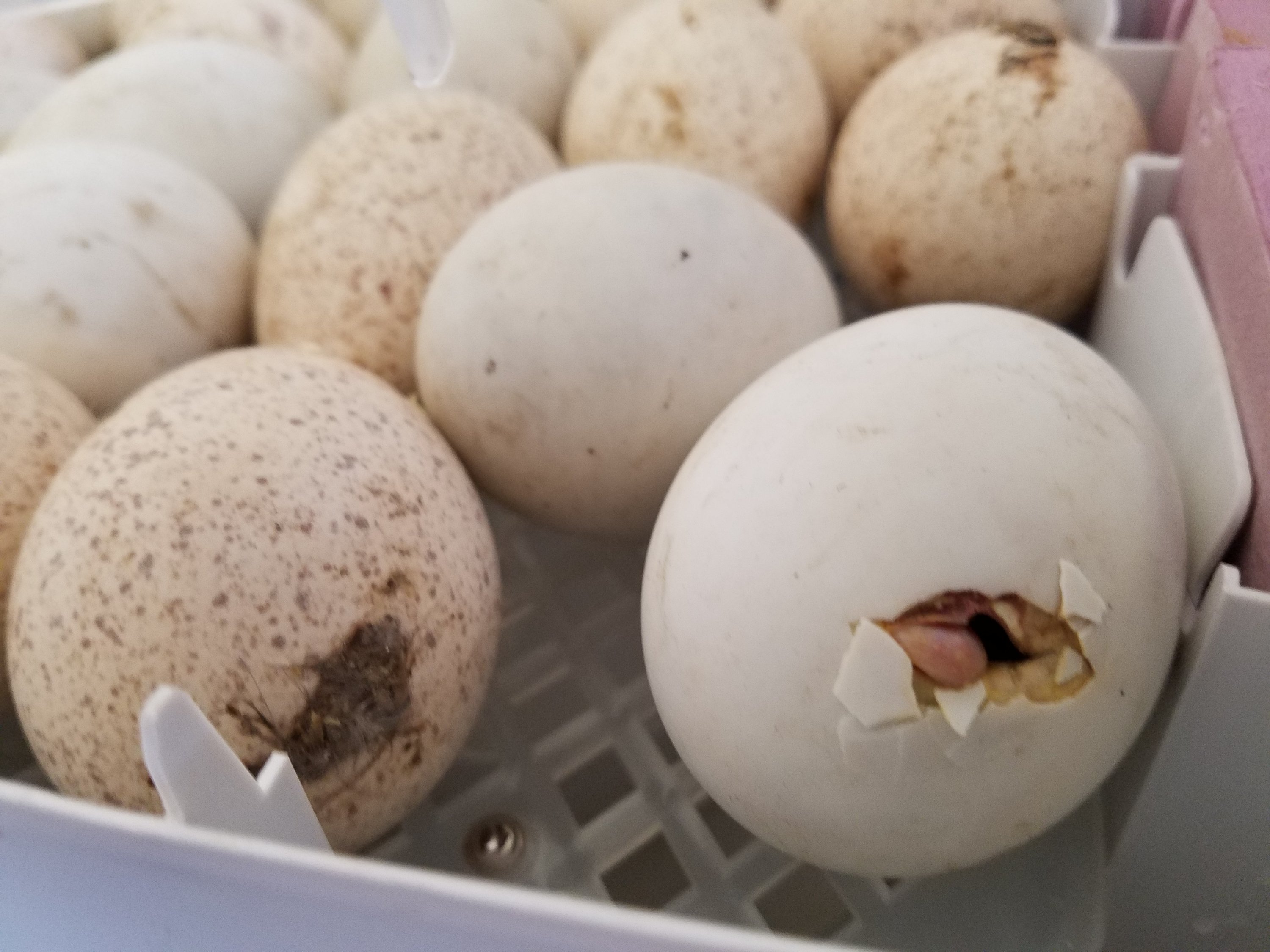
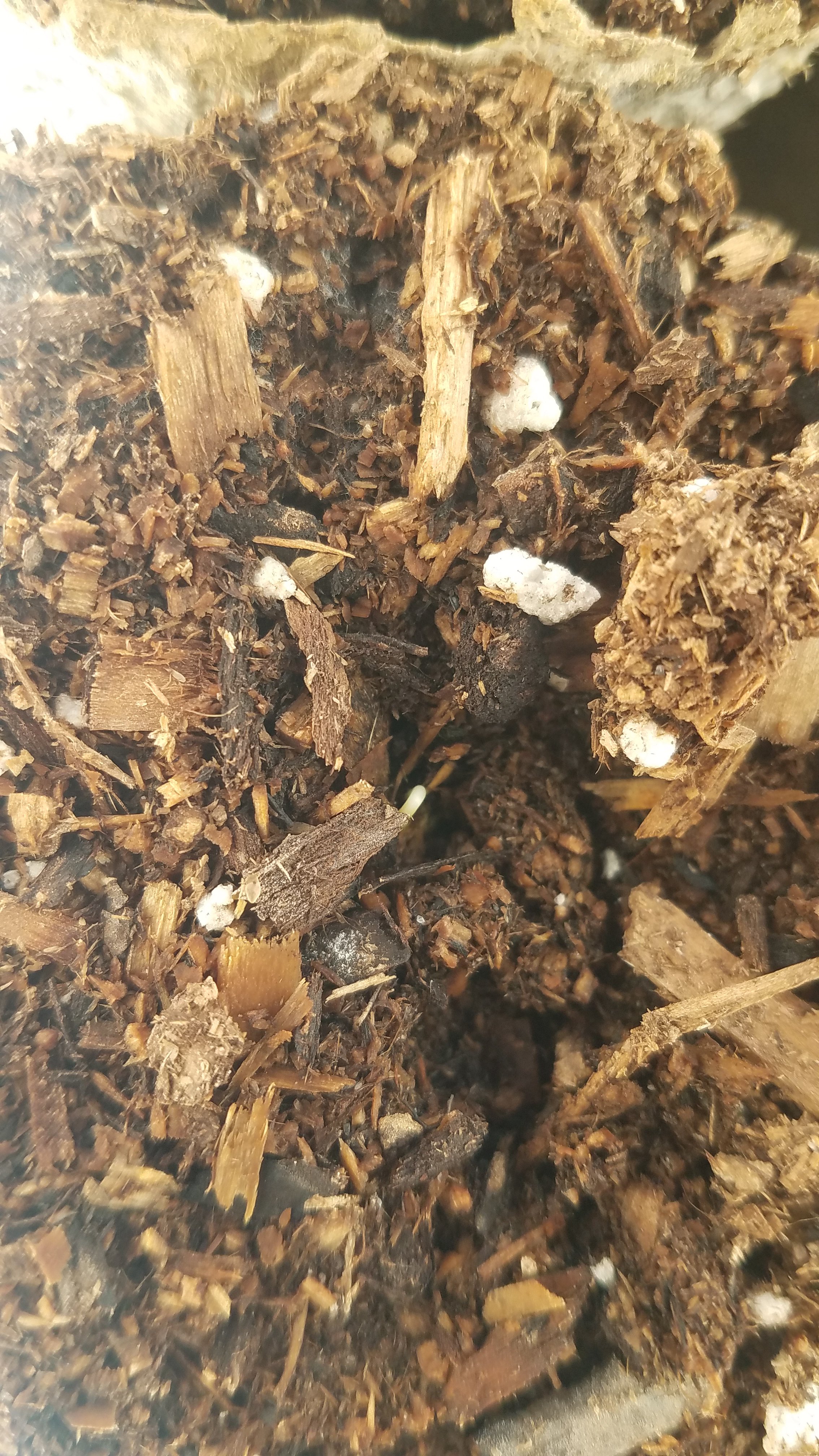
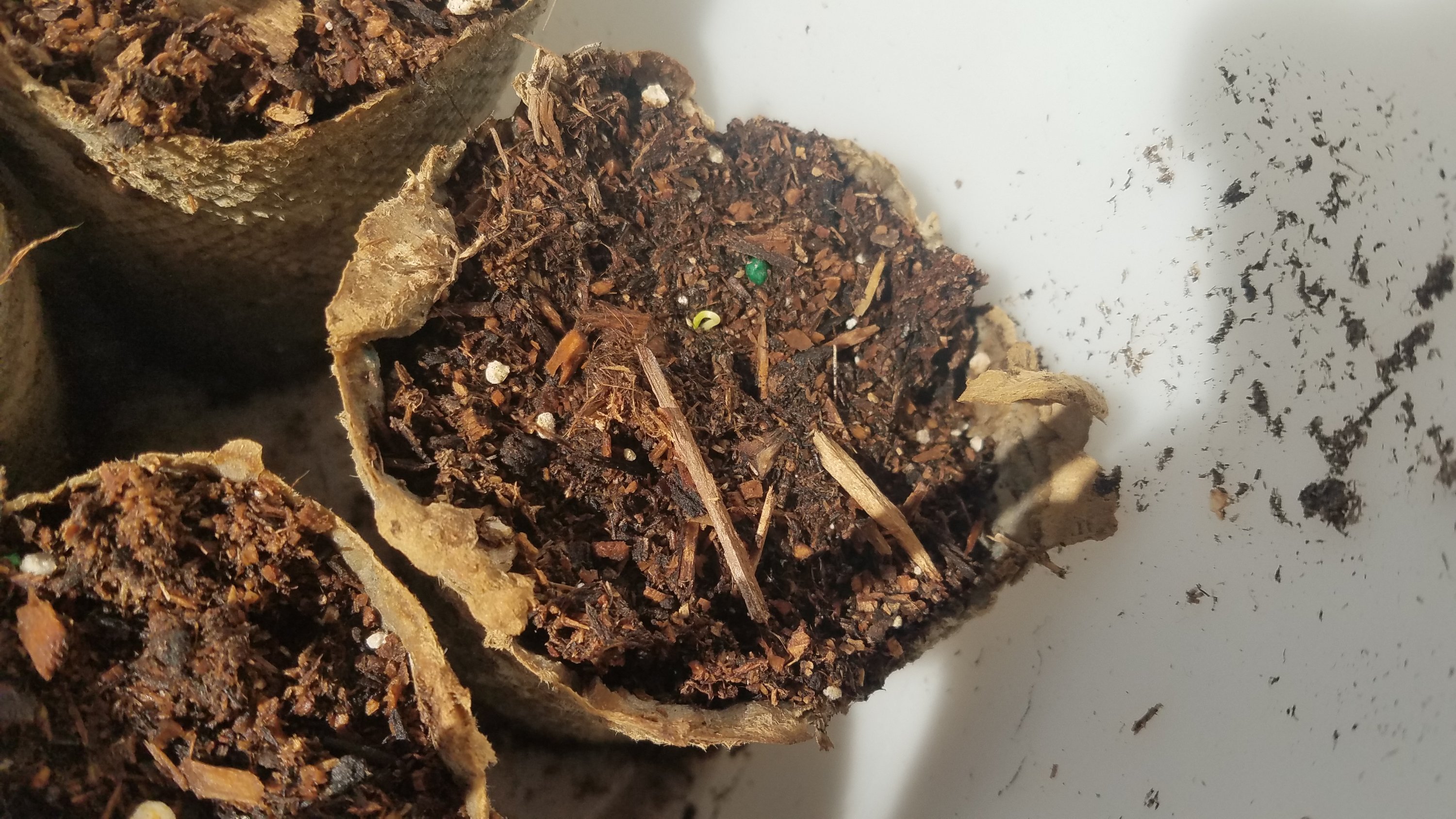
Y’all!! My Jimmy Nardello sweet peppers are poppin’!! Seeee??? I’m so happy!
Life can sometimes be just a string of minor disappointments (sorry to go philosodark on ya). And we just get to roll with them + grow from them. But every once in a while, life surprises you with a miracle! New life is glorious and it’s something worth celebrating!! Seedlings! Yay!
Back to my string of minor disappointments… A tray of bebe onions and wee holy basil were blown off my porch yesterday and scattered to the wind. When you hand-water for weeks and talk to your seedlings, it’s sad when it ends in a flash. Like, mood altering sad. Like, I want to talk to someone, but can’t figure out if it should be a therapist or a botanist. Yes, I can always replant, but I still feel the sting of loss.
Today, I felt like the loss of my onions and holy basil was compensated for with the victory of my super pretentious Jimmy Nardello Italian sweet pepper seedlings emerging!
The tatsoi has sprouted nicely, the orach pretty well, and the mizuna, lettuce, and cutting greens sparsely. Keeping the soil surface moist has been a challenge this week due to extremely high winds (strong east winds blew the farm stand over yesterday) and very low humidity.
I finished installing the garden irrigation system today. We can run two soaker hoses on each of the six garden rows.
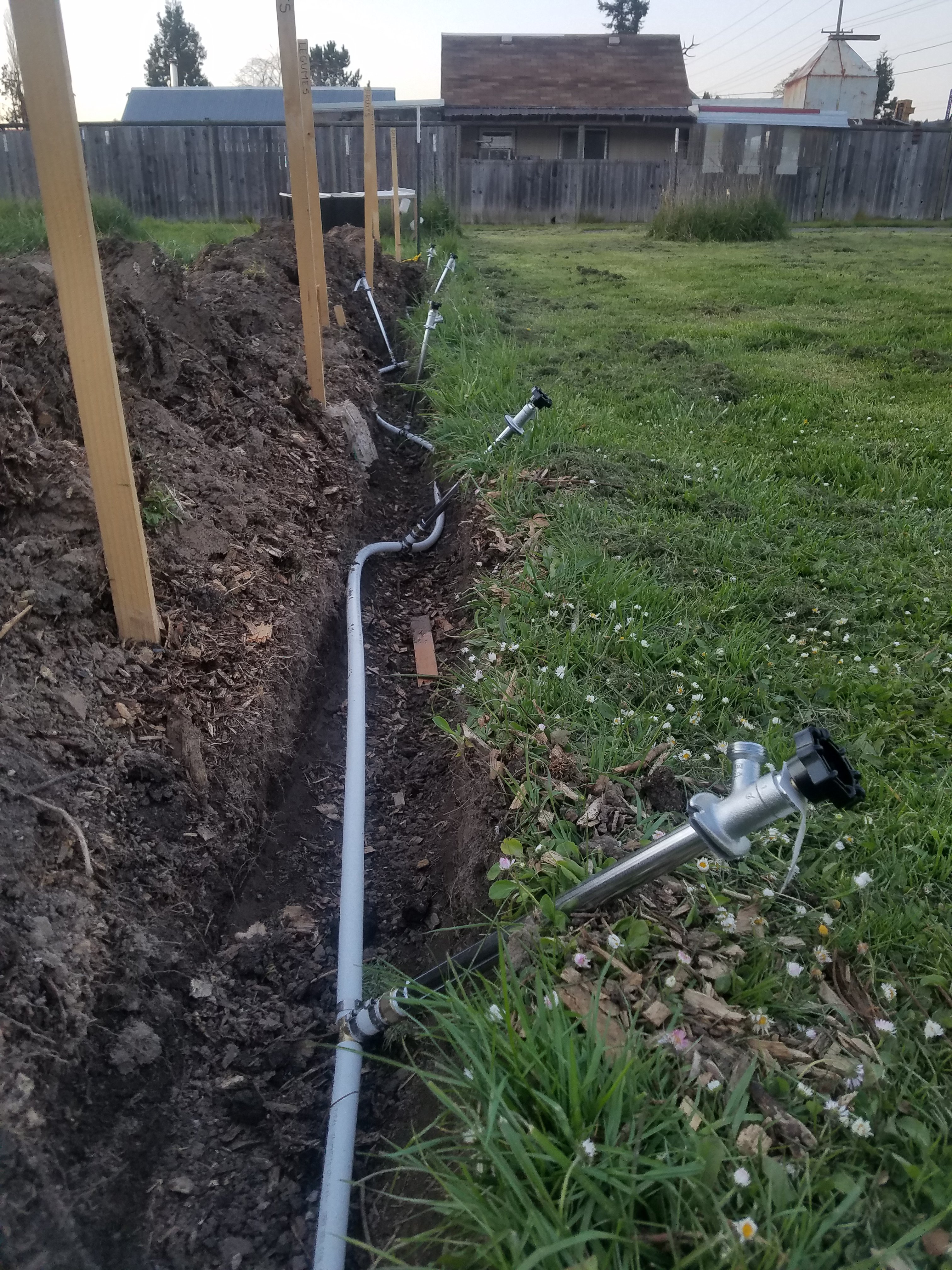
I made vinegar last year, and I believe that it saved my mental health.
When the pandemic hit in 2020 and we were all wondering “what’s next?” I started feeling weird and weirder. I guess you could call it anxiety. I had trouble regulating my breathing and I sometimes woke up in the middle of the night feeling (and knowing) something bad was going to happen.
I needed something to both anchor me and distract me–something that would take my mind off uncertainty, and let it just imagine goodness. It was summer and the pandemic wasn’t going away. I don’t know where the idea to make vinegar came from–but as soon as I thought it, it felt like the right thing to do.
Here’s how it works: Fruit + water + sugar turns into fermented juice which then turns into vinegar. The moment I realized that fruit is fruit is fruit, I was like “Hold the phone, Martha! I’m going to make vinegar from every fruit I can get my hands on this summer.”
And I did! Blackberries, plums, apples, pears, grapes. They all sat on my wire shelves, patiently fermenting, bubbling, gassing and morphing. It was the most beautiful, hopeful thing to see jars and buckets of jewel-toned fruit, bobbing in frothy liquid.
The fruits were changing, and they were giving me something to look forward to each day. (Remember the dreamy golden redness of the plum vinegar?) As I struggled to stay calm and hopeful in the midst of the 2020 chaos (um, stressful presidential election, too!), the vinegars were a project that saved me from self-destructing by binge watching crappy tv, feeling self pity, or just doing nothing.
And just recently (no joke!), I finally cracked into my stash of vinegars (why did it take me so long??) I made a vinaigrette this week to go with the kale salad from our garden, and then I preserved a batch of marinated sun-dried tomatoes to keep in our fridge. I also added the blackberry vinegar to some chickpea curry–and it 10x-ed the umami. I’m loving my sweet, dark blackberry vinegar. (P.S. I will always love you, blackberry vinegar, and i promise to make a new batch of you every year, i love you so much xoxo)
So, why go to the trouble of harvesting local fruits, learning how to make vinegar, then letting a bottle of fermenting fruit sit on your kitchen shelf for a month or more so you can strain it and set it on your shelf? Because when you can add one more item to your pantry shelf that you made yourself, it truly feels healing, miraculous, beautiful and wholesome.
Not a very sexy answer, but it’s 100% true.
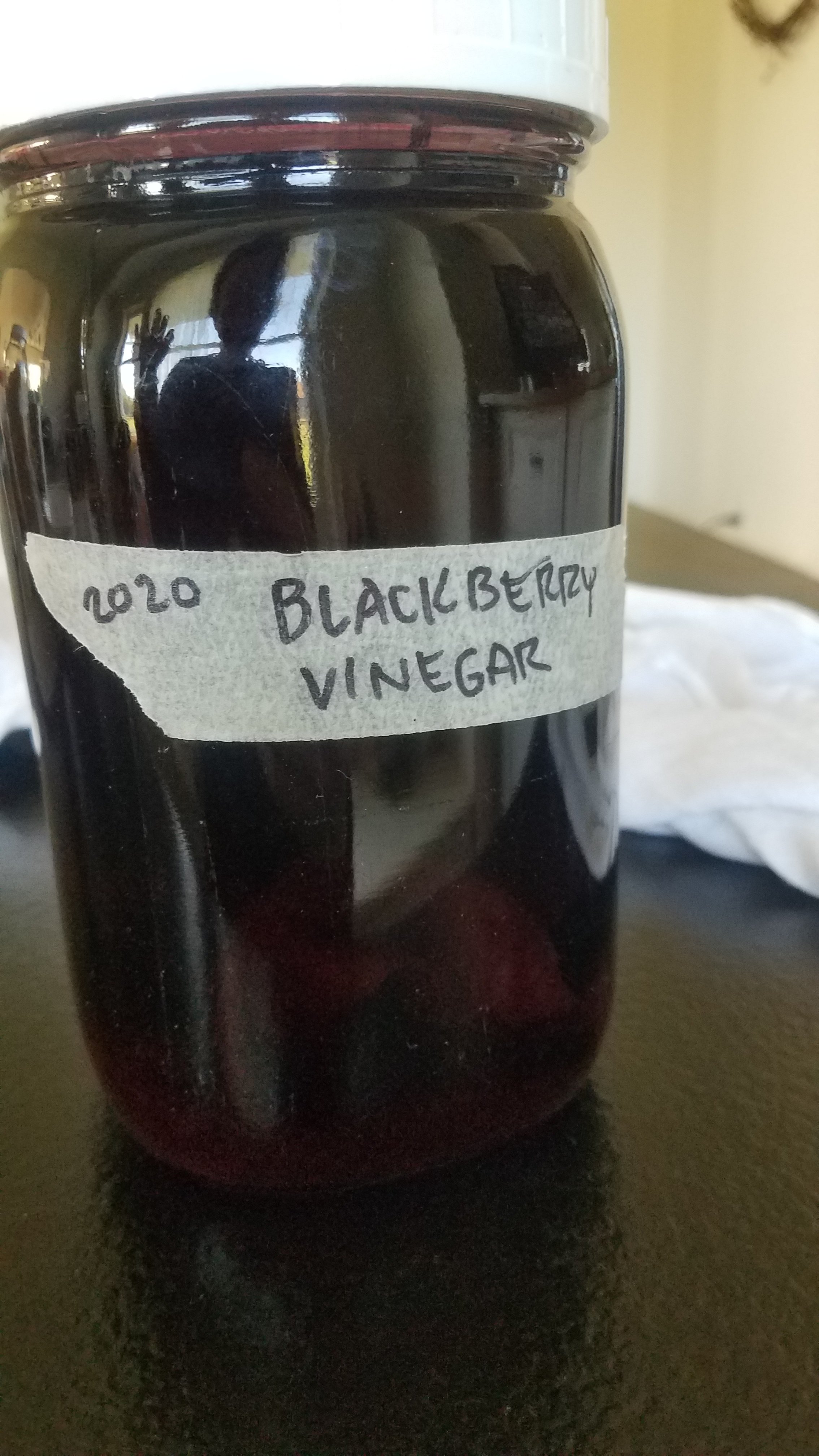

Yesterday I planted my multi-sown beet starts and some Oregon Peas. It feels great to be able to put some things in the garden.
I also planted carrots in a self watering bucket. I’m hoping those are successful, because up until now, 100% of my carrot attempts have failed. Always hopeful.
Then today I labeled my herb garden. Half is culinary herbs and the other half are medicinal.
This evening we planted tatsoi, muzuna, and orach in row 5, and little gem lettuce and cutting mix in row 6 (3×3 patches about 6 feet in from the east end). The seeds are so tiny, they remind me of having “faith as a grain of mustard seed.” It’s hard to believe that these ones will grow into food for the dinner table.
Grant transplanted lettuce, kale, and spinach.
